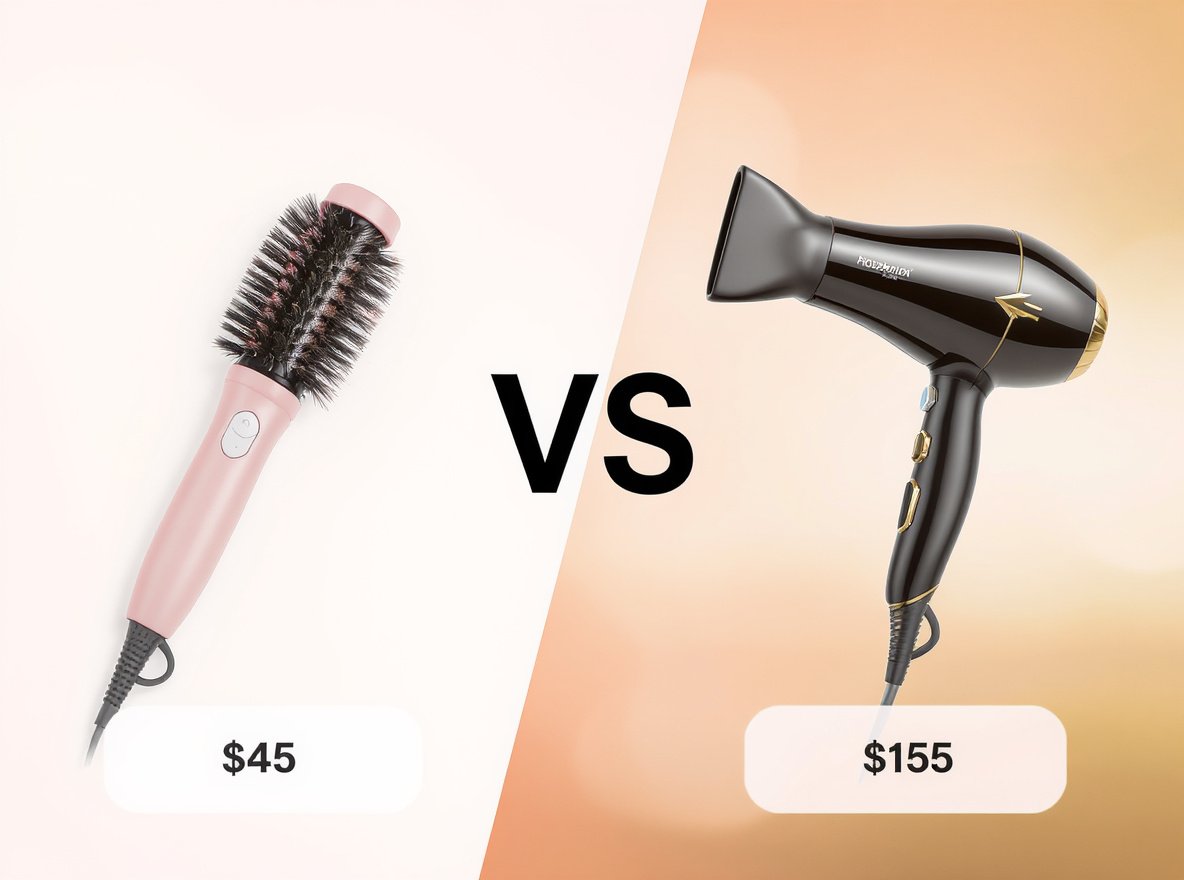Nothing’s more frustrating than pulling out your hair dryer’s retractable cord only to find it won’t wind back up. You’re left with tangled cables cluttering your bathroom counter, and your once-convenient appliance now feels like a hassle to use every day.
A retractable cord that won’t retract is typically caused by spring mechanism problems, over-extension damage, dirt buildup, or cord tangling inside the housing. Most issues can be fixed through spring tension adjustment, cleaning, or manual rewinding without requiring professional repair.
Don’t give up on your appliance just yet – most retractable cord problems have straightforward solutions you can tackle safely at home.
Table of Contents
ToggleWhat Are the Main Causes of Retractable Cord Failure?
Understanding why your retractable cord stopped working helps you choose the most effective repair approach and prevents future problems.
Retractable cord failure occurs due to weakened spring mechanisms, over-extension beyond safety limits, accumulated dirt and debris, or internal cord tangling. These mechanical issues develop gradually with regular use and environmental factors like dust and humidity.

The four primary causes include:
Spring Mechanism Problems
The internal spring can lose tension, break completely, or become misaligned from its anchor points. Over time, repeated winding and unwinding weakens the spring metal, reducing its ability to generate sufficient retraction force.
This represents the most common cause of retractable cord failure, affecting approximately 60% of cases according to appliance repair data.
Over-Extension Damage
Pulling cords beyond their red safety markers or yanking them forcefully damages internal components. Many users accidentally exceed safe extension limits, causing springs to snap or winding mechanisms to jam permanently.
Most retractable cords include colored tape indicating maximum safe extension – exceeding this limit often causes irreversible damage requiring complete mechanism replacement.
Dirt and Debris Accumulation
Hair dryers collect dust, lint, and styling product residue that clogs retraction mechanisms. This buildup creates friction that prevents smooth cord movement and eventually stops retraction entirely.
Bathroom environments compound this problem through humidity and airborne particles that stick to internal components over time.
Internal Cord Tangling
When cords don’t wind evenly during retraction, they create tangles inside the housing that block proper operation. Uneven winding often results from damaged guide mechanisms or user habits like letting cords snap back too quickly.
How Can I Tell If My Retractable Cord Is Worth Fixing?
Before investing time in repairs, assess whether your specific cord problem is economically and practically fixable.
A retractable cord is worth fixing if it shows partial retraction, intact housing, and no electrical damage. Signs of fixable problems include sluggish retraction speed, visible tangling when opened, or springs that appear intact but loose.
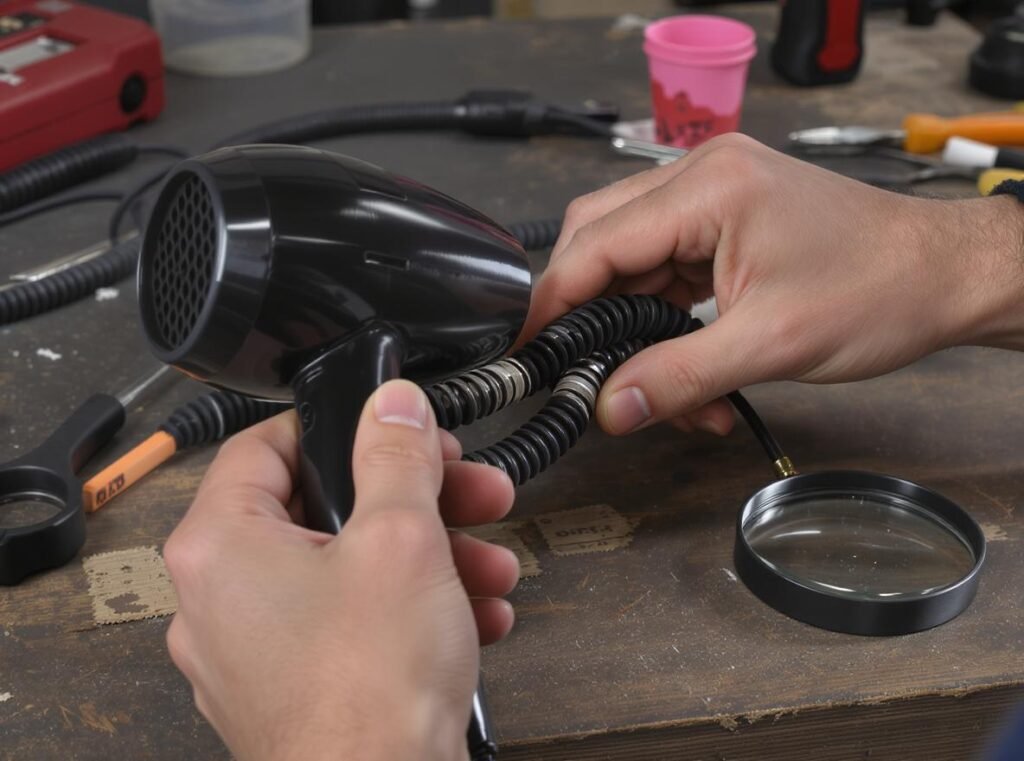
Use this assessment framework:
| Problem Signs | Repair Potential | Action Required |
|---|---|---|
| Partial retraction with stopping | High | Spring tension adjustment |
| Sluggish retraction speed | High | Cleaning and lubrication |
| Visible internal tangling | Medium | Manual rewinding |
| Spring appears loose but intact | High | Reattachment and tension |
Clear Replacement Indicators
Replace your hair dryer when you find broken or completely detached springs, frayed electrical wires with exposed copper, cracked housing that cannot seal properly, or when multiple previous repair attempts have failed.
Electrical safety always takes precedence over repair economics. Any visible wire damage, burn marks, or intermittent power issues warrant immediate replacement rather than attempted repairs.
Quick Functionality Test
Gently pull the cord to different lengths and release it. Any spring action or partial retraction indicates repairable mechanical issues rather than complete system failure.
Listen for internal sounds during operation. Normal mechanical noises suggest functional components, while grinding or rattling often indicates severe damage requiring replacement.
What Tools Do I Need for Retractable Cord Repair?
Having proper tools makes repairs safer, easier, and more likely to succeed. Most fixes require common household items plus a few specialized supplies.
Essential retractable cord repairs need screwdrivers, silicone lubricant, compressed air, pliers, and cleaning cloths. Always ensure you have proper lighting and work space before beginning any disassembly process.
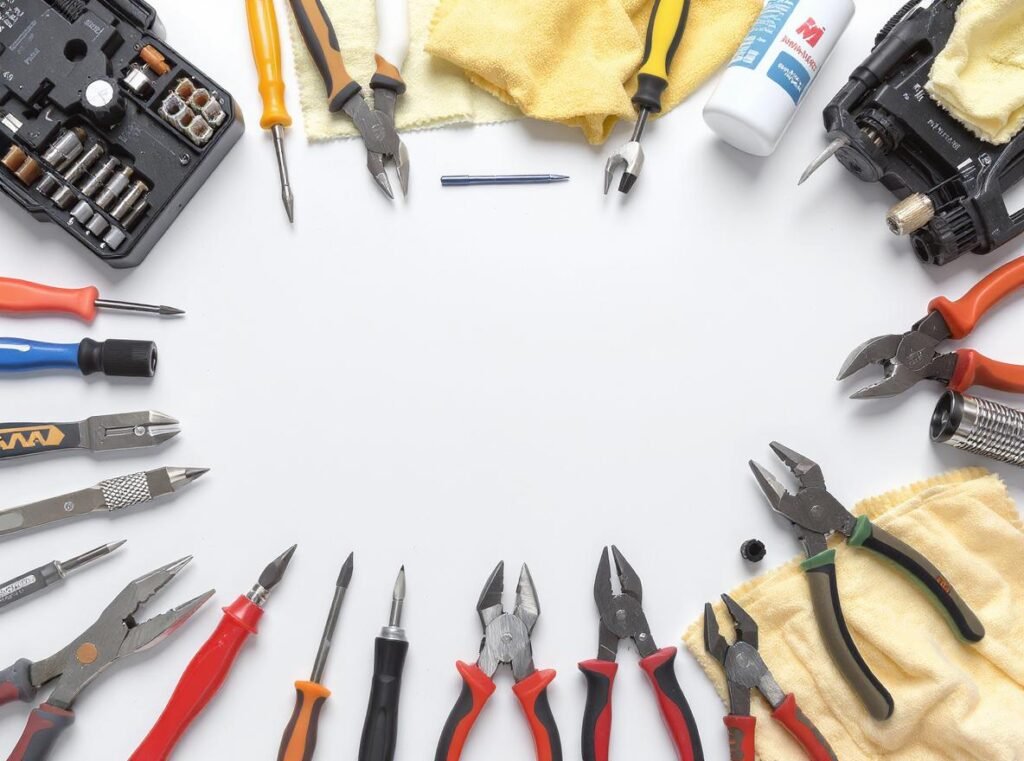
Primary Tool Requirements:
• Screwdriver set – Both Phillips and flathead for accessing housing screws
• Silicone lubricant or sewing machine oil – Lubricates moving parts without attracting debris
• Needle-nose pliers – Handles small springs and delicate components safely
• Compressed air or soft brush – Removes dust and debris from tight spaces
• Clean microfiber cloths – Wipes components without leaving residue
Safety Equipment
Work gloves protect hands from sharp edges and small parts. Safety glasses prevent debris from entering eyes during compressed air cleaning.
A flashlight or headlamp illuminates internal components clearly during disassembly and reassembly phases.
Advanced Repair Supplies
Isopropyl alcohol helps clean electrical contacts and removes sticky residue. Small containers organize screws and components during lengthy repairs.
Digital camera or smartphone captures assembly photos that guide proper reassembly when repairs become complex.
How Do I Fix Spring Mechanism Problems?
Spring issues cause most retractable cord failures, but many spring problems respond well to careful adjustment and reattachment.
Fix spring mechanism problems by safely disassembling the housing, assessing spring condition, reattaching disconnected springs to anchor points, and manually adjusting tension levels. Work slowly to prevent injury from compressed springs.
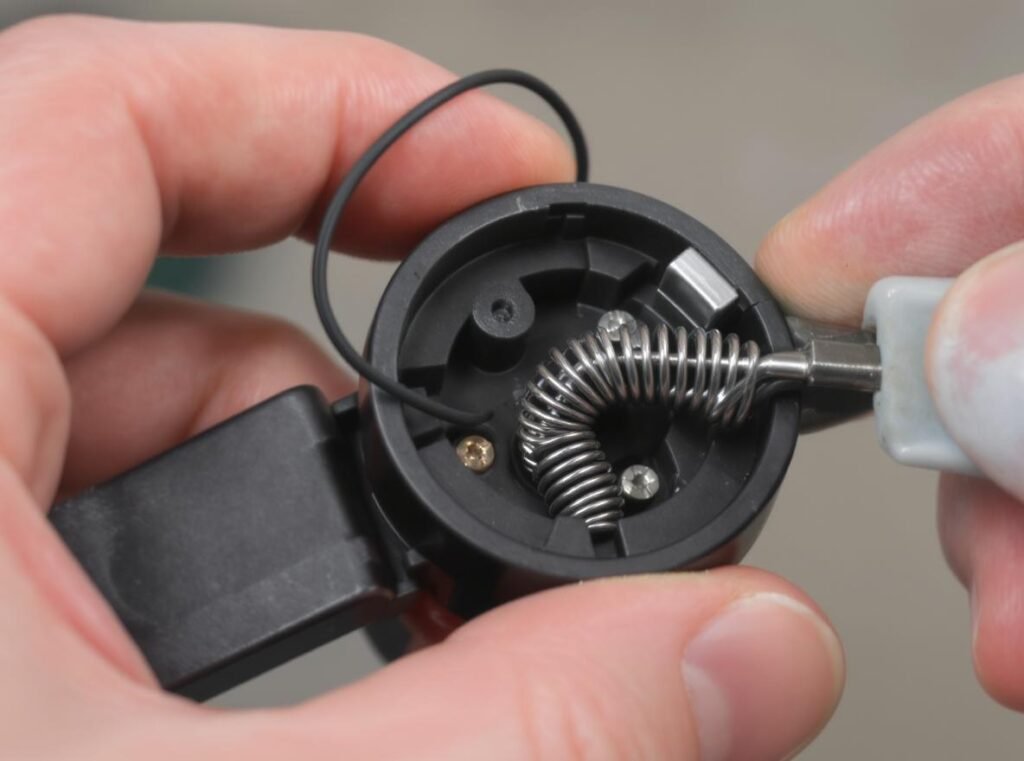
Step 1: Safe Disassembly
Always unplug the hair dryer before beginning any repair work. Remove housing screws carefully, being mindful that springs may have residual tension that can cause parts to fly out unexpectedly.
Work in good lighting and keep small parts in containers to prevent loss during the repair process.
Step 2: Spring Assessment
Inspect the spring mechanism for complete breaks in coil winding, detachment from designated anchor points, or significant loss of tension compared to normal operation.
Look for bent or deformed spring sections that might prevent proper winding action during cord retraction.
Step 3: Spring Reattachment Process
If springs have detached from mounting points, carefully reattach them to designated anchors. Some repairs may require drilling new holes if original anchor points have failed completely.
Ensure springs engage properly with the winding mechanism before proceeding with tension adjustments.
Step 4: Manual Tension Adjustment
Pull out some cord length and manually wind it while maintaining spring tension to ensure proper coiling action. Test retraction at partial extension before full reassembly.
Adjust tension gradually until cord retracts smoothly without excessive force that might damage internal components.
What Should I Do When My Cord Was Over-Extended?
Over-extension damage often appears irreversible, but systematic approaches can restore function in many cases.
Fix over-extended cord damage by fully extending the cord to assess damage, manually rewinding while maintaining gentle tension, checking for permanent kinks, and testing partial retraction cycles. If ratchet mechanisms are damaged, adjustment or replacement may be necessary.
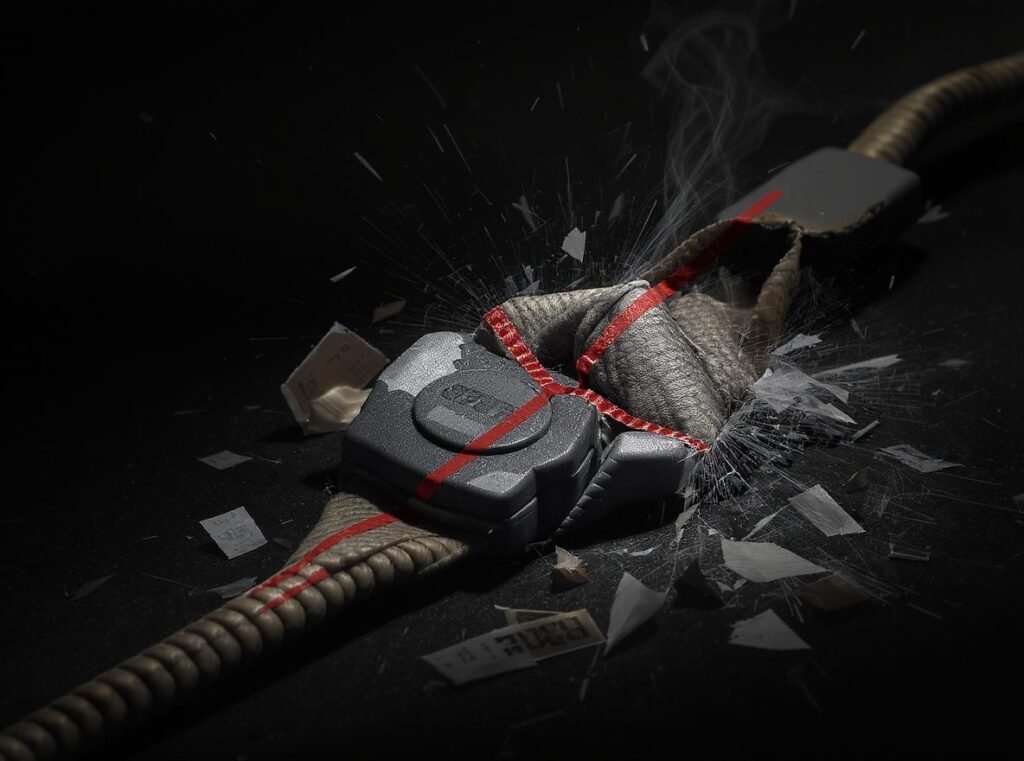
Immediate Damage Assessment
Extend the cord completely to identify areas of permanent deformation, kinking, or internal damage. Look for sections where the cord appears twisted or fails to maintain its original shape.
Check the ratchet mechanism that controls cord extension stops – this component often sustains damage during over-extension incidents.
Manual Rewinding Process
Begin rewinding the cord manually while maintaining consistent, gentle tension throughout the process. Follow the original cord path around internal drums and guides.
Avoid forcing tangled sections – instead, work them free gradually to prevent additional damage to cord sheathing or internal wires.
Mechanism Testing
Test the mechanism by partially extending and retracting several times before full reassembly. The cord should hold position at various extension lengths without slipping or jamming.
If the cord won’t maintain position, the ratchet mechanism likely needs adjustment or component replacement.
Kink Management
Permanent kinks in cord material often cannot be completely eliminated, but gentle warming and reshaping can improve flexibility and reduce retraction resistance.
Never use excessive heat that might damage electrical insulation or cord materials.
How Do I Clean a Dirty Retractable Cord Mechanism?
Cleaning removes debris that causes most retraction problems and extends mechanism lifespan significantly.
Clean retractable cord mechanisms through systematic disassembly, compressed air debris removal, contact point cleaning with isopropyl alcohol, and sparing lubrication of moving parts. Focus cleaning efforts on high-debris areas like cord entry points.
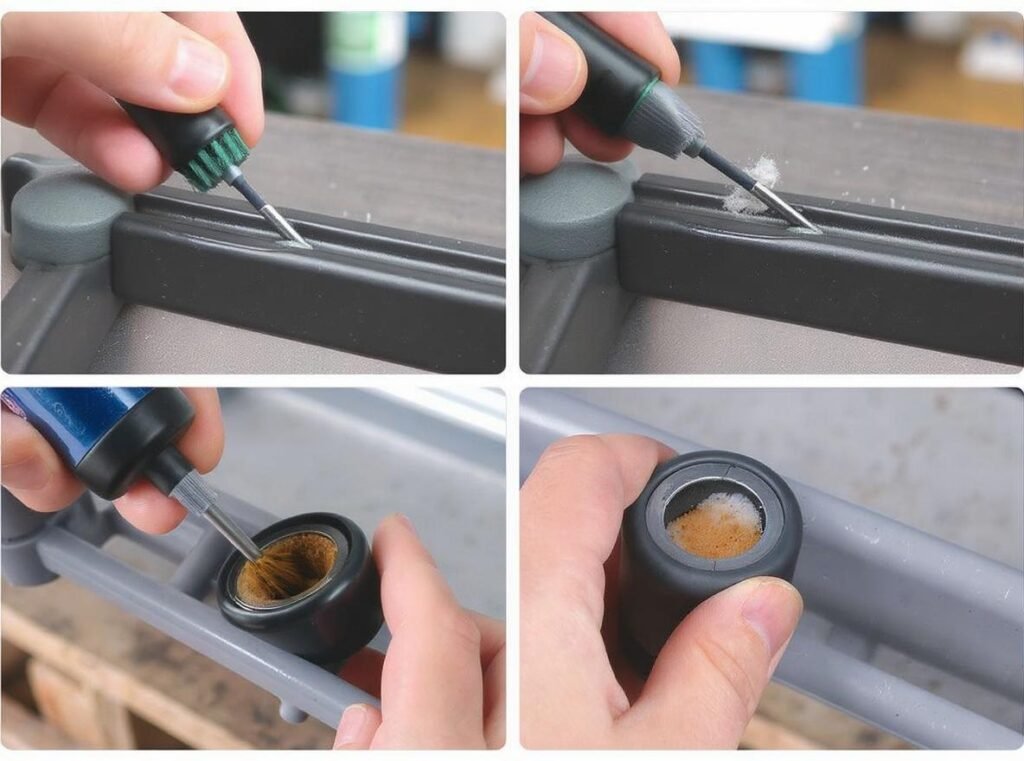
Internal Component Cleaning
Remove dust and debris using compressed air directed at mechanism components from multiple angles. Use soft brushes for stubborn buildup that compressed air cannot dislodge.
Clean electrical contact points with isopropyl alcohol applied to cloth rather than directly to components – this prevents liquid damage while removing corrosive buildup.
Moving Parts Lubrication
Apply silicone lubricant sparingly to pivot points, spring anchors, and sliding surfaces. Avoid over-lubrication that attracts more dirt and creates sticky buildup over time.
Test mechanism operation manually after lubrication to ensure smooth movement without binding or excessive resistance.
Cord Surface Cleaning
Dust the cord exterior with dry microfiber cloth to remove surface contamination. For sticky residue, use dish soap solution applied with damp sponge, pinching around the cord’s entire length.
Allow complete drying before reassembly – moisture inside electrical components can cause dangerous short circuits or component corrosion.
Filter and Housing Maintenance
Clean air intake filters monthly to prevent debris from entering internal mechanisms. Hair dryers collect significant amounts of hair and styling product residue that accelerates component wear.
Wipe housing surfaces regularly to prevent buildup that eventually works its way into internal mechanisms through ventilation openings.
When Should I Replace Instead of Attempting Repairs?
Sometimes replacement offers better value and safety than continued repair attempts on aging mechanisms.
Replace retractable cord hair dryers when repair costs exceed 50% of replacement value, electrical components show damage, or the unit is over 3 years old with significant problems. Budget models typically last 6-12 months, while quality units last 2-3 years with regular use.
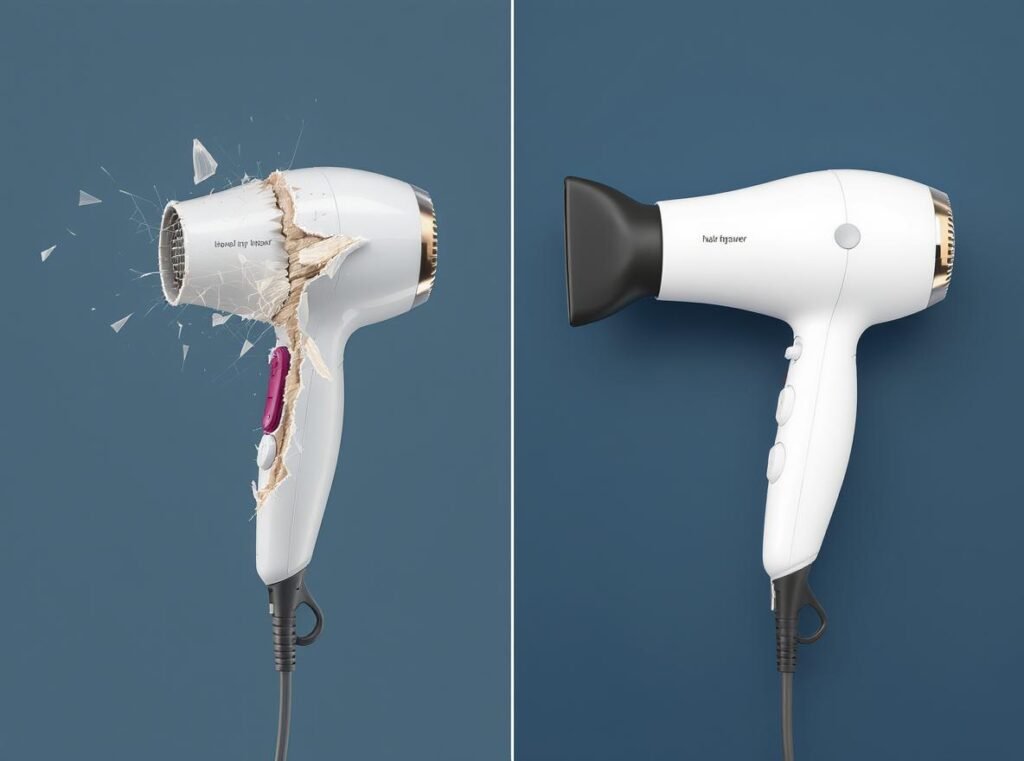
Economic Replacement Thresholds
Simple hair dryer repairs typically cost $50-125 in parts and time, while complex fixes can reach $150-350. When repairs approach half the replacement cost, investing in new equipment often provides better long-term value.
Consider your usage patterns – high-frequency users benefit more from replacement than occasional users who might justify repair costs.
Safety-Based Replacement Criteria
Replace immediately when electrical safety is compromised through exposed wires, damaged housing that cannot be properly sealed, or any signs of overheating like burn marks or melted components.
Multiple failed repair attempts indicate fundamental design or component problems that will likely recur, making replacement the safer choice.
Age and Reliability Factors
Hair dryers over 3 years old with significant retractable cord problems often have multiple aging components that will fail progressively. Replacement prevents ongoing reliability issues.
Budget retractable cord models have inherently shorter lifespans due to lower-quality internal components and lighter construction materials.
Upgrade Opportunities
Modern replacement models often include improved technology, better reliability, and enhanced safety features compared to older units requiring repair.
For businesses serving customers, newer equipment provides better warranty coverage and reduces service call frequency that affects customer satisfaction.
How Can I Prevent Future Retractable Cord Problems?
Preventive maintenance and proper usage habits can double or triple retractable cord mechanism lifespan.
Prevent retractable cord problems by never exceeding red extension markers, guiding cords during retraction, avoiding twisting during use, and performing regular cleaning maintenance. Proper storage and environmental control also significantly extend mechanism life.
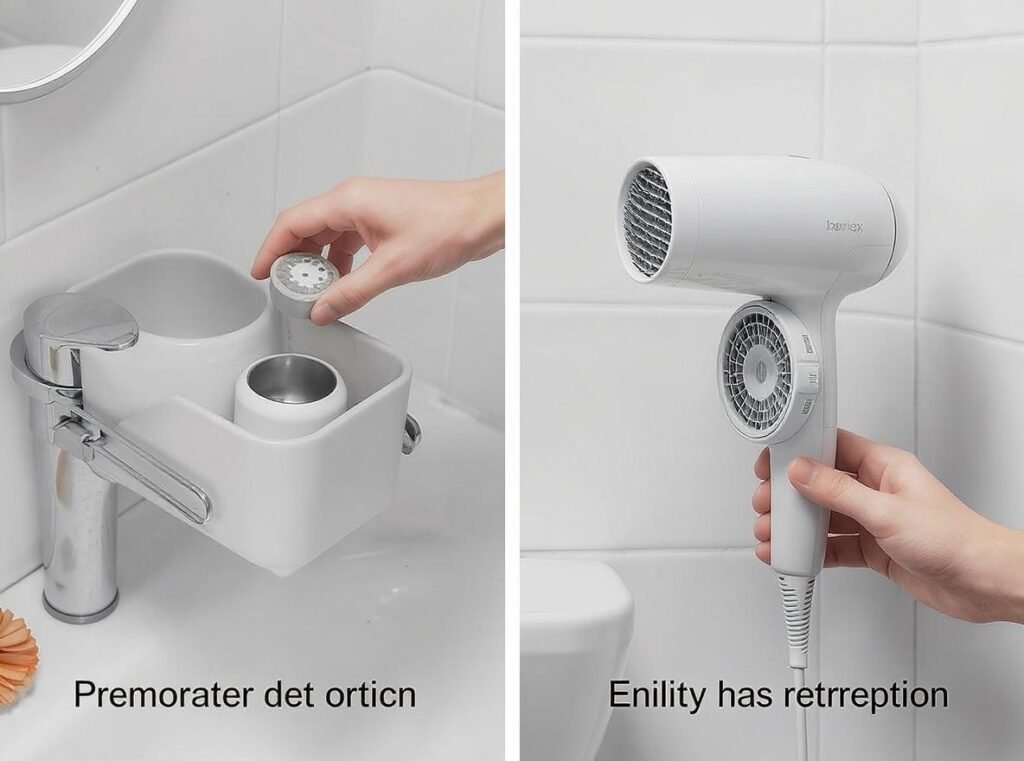
Critical Usage Guidelines
Never pull cords beyond their red safety markers or maximum extension indicators. These limits exist to prevent spring over-tension and internal component damage.
Guide cords gently during retraction rather than letting them snap back forcefully – this reduces wear on internal mechanisms and prevents tangling.
Environmental Protection
Store hair dryers in dry locations away from humidity that can cause internal corrosion and debris accumulation. Bathroom storage often exposes mechanisms to moisture and dust.
Avoid extreme temperatures that can affect spring tension and plastic component flexibility over time.
Maintenance Schedule
Clean air intake filters monthly to prevent debris buildup that eventually reaches internal mechanisms. This simple step prevents most dirt-related failures.
Inspect cords regularly for signs of wear, fraying, or damage that might indicate developing problems before complete failure occurs.
Quality Equipment Investment
Choose hair dryers with robust retractable cord systems from manufacturers known for reliability and component quality. Higher initial investment typically provides better long-term value.
Professional-grade equipment often includes user-serviceable components and clear maintenance documentation that extends usable life significantly.
What Are the Most Reliable Retractable Cord Hair Dryers?
Selecting quality equipment prevents most retractable cord problems while providing superior performance for professional and personal use.
The most reliable retractable cord hair dryers feature quality spring mechanisms with proper tension, clear extension limit markings, smooth retraction button operation, and durable housing construction. Professional models typically offer better longevity than consumer-grade alternatives.
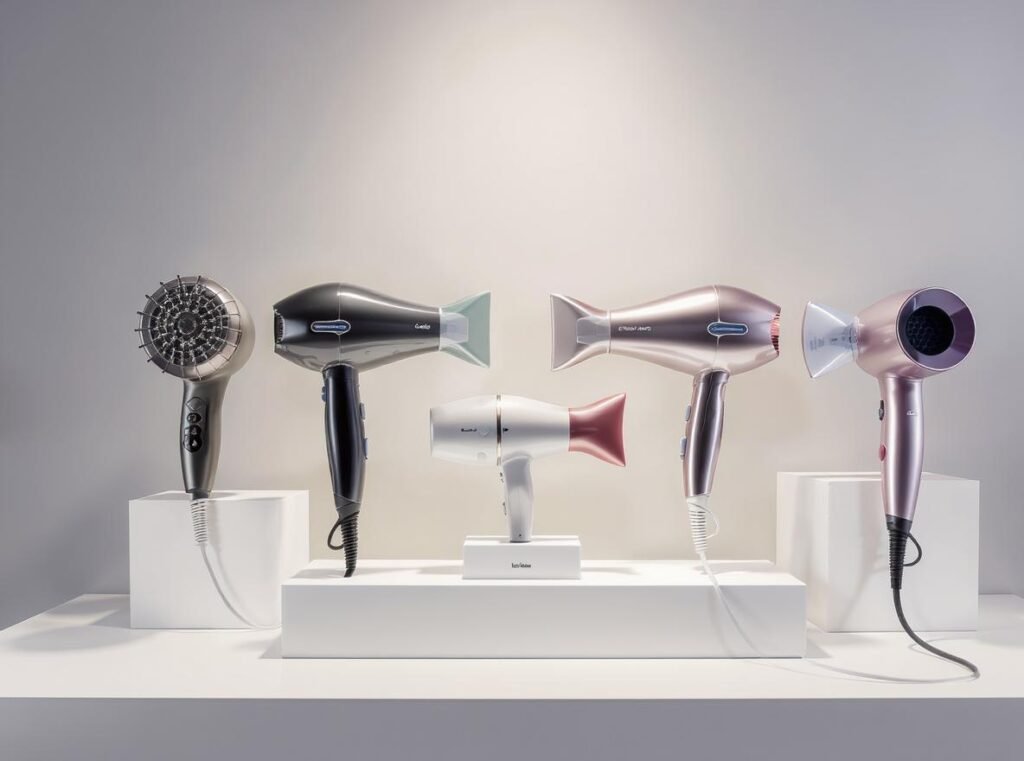
Budget Options ($15-30)
Conair Cord-Keeper 1875W Hair Dryer offers ionic conditioning, dual heat/speed settings, and comes in multiple colors. This model provides decent reliability for occasional use patterns.
Revlon 1875W Retractable Cord Fold & Go includes ceramic technology and compact design suitable for travel and small storage spaces.
Mid-Range Options ($30-60)
Conair InfinitiPro with Retractable Cord features enhanced motor performance and includes multiple styling attachments for versatile use.
Revlon Pro Collection Salon Style & Go provides professional-level features with dual voltage capability for international travel.
Professional Recommendations
For wholesale and retail applications, consider the Conason P1C high-speed hair dryer which combines robust retractable cord mechanism with professional-grade performance standards.
This model provides excellent reliability for high-frequency salon use while maintaining smooth retraction operation throughout its extended service life.
Key Reliability Features
Quality units include user-replaceable parts and comprehensive service documentation that allows easier maintenance and extends overall appliance lifespan.
Look for models with metal housing components around cord mechanisms rather than all-plastic construction – metal provides superior durability and heat resistance.
Important Reliability Note
Retractable cord hair dryers are generally considered less reliable than standard corded models due to their increased mechanical complexity. For maximum longevity, carefully consider whether retractable cord convenience outweighs potential for more frequent replacements.
When reliability is paramount, traditional corded models typically provide longer service life with fewer mechanical failure points.
Where Can I Find Quality Retractable Cord Hair Dryers for Wholesale?
Professional distributors and retailers need reliable equipment that minimizes customer service issues and warranty claims.
Quality retractable cord hair dryers for wholesale applications should feature robust internal mechanisms, professional-grade components, and comprehensive warranty coverage. Choosing reliable models reflects positively on business reputation and reduces return rates.

Wholesale Considerations
Professional equipment reduces warranty claims and improves customer satisfaction compared to budget alternatives. Quality construction translates directly to fewer service issues and happier end customers.
Volume purchasing often provides access to enhanced technical support and replacement parts availability that individual consumers cannot obtain.
Professional Product Lines
Browse our complete hair dryer collection to find models that match your customers’ reliability requirements across various price points and feature sets.
Our wholesale team provides detailed technical specifications on retractable cord mechanisms, helping you select appropriate models for different market segments.
Partnership Benefits
Contact our wholesale division for volume pricing structures and technical support that helps your business succeed in competitive markets.
We offer comprehensive product training and marketing support that helps your sales team effectively communicate product benefits to end customers.
Summary
Retractable cord problems are usually fixable through spring tension adjustment, thorough cleaning, or careful manual rewinding. Most issues stem from over-extension, dirt accumulation, or normal component wear rather than complete mechanism failure. With basic tools and systematic approaches, you can restore proper function to many retractable cord appliances and significantly extend their useful service life.
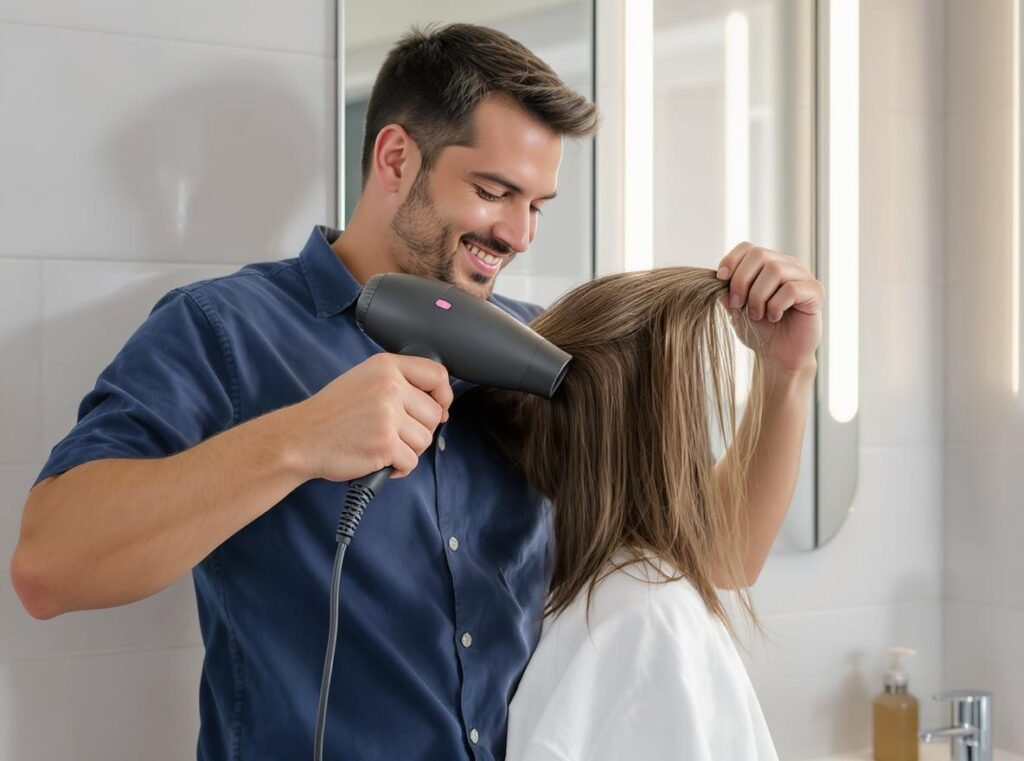
Ready to upgrade to more reliable professional equipment? Explore our comprehensive selection of hair dryers with robust retractable cord systems, or contact our wholesale team for volume pricing and technical specifications that help your business provide better customer satisfaction.



